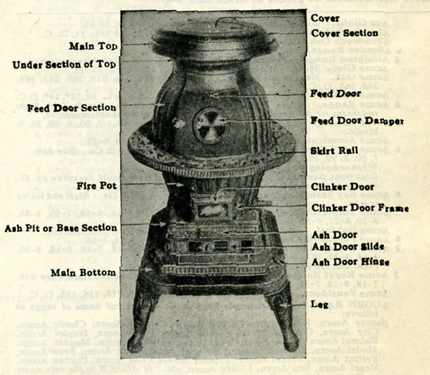An ethics professor at Princeton Theological Seminary asked for volunteers for an extra assignment. At two o’clock, fifteen students gathered at Speer Library. There he divided the group of fifteen into three groups of five each.
He gave the first group of five envelopes telling them to proceed immediately across campus to Stewart Hall and that they had fifteen minutes to get there. If they didn’t arrive on time it would affect their grade. This he called the “High Hurry” group.
A minute or two later he handed out envelopes to five others. Their instructions were to also go over to Stewart Hall, but they were given forty-five minutes.
After they departed he gave the last of the envelopes with instructions to the third group, the “Low Hurry” group. They were given three hours to arrive at Stewart Hall.
Now, unknown to any of these students, the teacher had arranged with three students from the Princeton University Drama Department to meet them along the way, acting as people in great need.
In front of Alexander Hall one of the drama students was going around covering his head with his hands and moaning out loud in great pain.
As they passed by Miller Chapel on their way to Stewart Hall they found a fellow who was on the steps lying face down as if unconscious. And finally on the very steps of Stewart Hall the third drama student was acting out an epileptic seizure.
It’s interesting that of the first group no one stopped, of the second, two of the five stopped, and of the third group all five stopped.
Maybe one of the reasons that the Good Samaritan was able to stop and help was because he had a more leisurely agenda, while the religious “pros” of Jesus’ day were living in the fast lane and simply had no time for interruptions. Their calendars may well have been filled with commitments that left them no leeway.
As Dr. Hewett alludes to in his concluding paragraph, anyone reasonably familiar with the teachings of Jesus cannot read the above story without immediately being reminded of His famed “Parable of the Good Samaritan” as found in the New Testament gospel of Luke (chapter 10, verses 25-37):
25On one occasion an expert in the law stood up to test Jesus. “Teacher,” he asked, “what must I do to inherit eternal life?” 26“What is written in the Law?” he replied. “How do you read it?” 27He answered, “ ‘Love the Lord your God with all your heart and with all your soul and with all your strength and with all your mind’ ; and, ‘Love your neighbor as yourself.’ ” 28“You have answered correctly,” Jesus replied. “Do this and you will live.”
29But he wanted to justify himself, so he asked Jesus, “And who is my neighbor?” 30In reply Jesus said: “A man was going down from Jerusalem to Jericho, when he was attacked by robbers. They stripped him of his clothes, beat him and went away, leaving him half dead. 31A priest happened to be going down the same road, and when he saw the man, he passed by on the other side. 32So too, a Levite, when he came to the place and saw him, passed by on the other side.
33But a Samaritan, as he traveled, came where the man was; and when he saw him, he took pity on him. 34He went to him and bandaged his wounds, pouring on oil and wine. Then he put the man on his own donkey, brought him to an inn and took care of him. 35The next day he took out two denarii and gave them to the innkeeper. ‘Look after him,’ he said, ‘and when I return, I will reimburse you for any extra expense you may have.’
36“Which of these three do you think was a neighbor to the man who fell into the hands of robbers?” 37The expert in the law replied, “The one who had mercy on him.” Jesus told him, “Go and do likewise.”
Ouch! Obviously, both the Priest and the Levite here were good religious individuals with “places to go, things to do, and people, to see”! It therefore seems as if this parable has special relevance for those in full-time vocational Christian ministry like me. And yet, it is for this very reason that this story has relevance not just for “Ministers”, but for everyone who claims to live for God.
Let’s face it. We all live busy lives. Many of us find that our weeks are so full of meetings and appointments that we can barely find the time to breathe. In my own case, I have a weekly schedule, replete with an agenda for each day of the week.
Moreover, I try desperately to cling to this schedule; for experience has taught me that if I fall behind, especially early in the week, I will then quickly lose control and find myself having to work hard to catch up in order to meet my deadlines for regularly assigned duties and responsibilities.
And yet, I have also learned a fundamental paradoxical truth. Juxtaposed to the busyness and inflexibility of my schedule are the very opportunities that so often present themselves for ministry. In fact, the busier I am, the more the opportunities to set aside my business and attend to these ministry needs.
My strong suspicion is that the “grade”, as it were, that each of those five “High Hurry” group students received for the audible presentation of their assigned sermon (see below) has long been forgotten. By contrast, what will likely never be forgotten was their later learning of the missed opportunities for ministering in the name of the very Christ whose message they were each called to preach!
May we learn from their actions! And may we always remember that the proclamation of the Gospel must ever be accompanied by the practice of it!
STORY SOURCE: James S. Hewett, Illustrations Unlimited (Wheaton, Illinois: Tyndale House Publishers, 1988), p. 367. Dr. Hewett was for years the Senior Pastor of Presbyterian churches in Walnut Creek, California, and Saratoga, California. He was also formerly the editor and publisher of Parables Etc. and The Pastors Story File, two monthly newsletters of illustrations for speakers. The above book is a collection of communicative materials resulting from his many decades of ministry.
For my part, I attended Princeton Theological Seminary about a decade after the incident cited above had occurred. But it was well remembered by the seminary community. Dr. Hewett, himself, passed away in 2006; so I do not know the source of his version of this incident. It may have come from personnel memory as official accounts differ ever so slightly as to the details of the actual experiment.
It appears to have been two Princeton social psychologists, John Darley and Dan Batson, who designed the experiment; even though it was apparently carried out by a Seminary preaching professor. It also appears that the “High Hurry” group, at least, were given the assignment to get to Stuart Hall (the correct spelling) and deliver a sermon on the Parable of the Good Samaritan that they had earlier been assigned to prepare, not knowing anything about the professor’s ensuing plans. Other groups may have been given different topics to subjects on which to speak.
Either way, the official report is contained in: Darley, J. M., & Batson, C. D. (1973). "From Jerusalem to Jericho": A study of situational and dispositional variables in helping behavior. Journal of Personality and Social Psychology, 27(1), 100-108. It can found online here: http://psycnet.apa.org/doiLanding?doi=10.1037%2Fh0034449.
See also: http://www.rightattitudes.com/2015/06/16/people-in-a-rush-are-less-likely-to-help-themselves/.
SCRIPTURE SOURCE: http://biblehub.com/niv/luke/10.htm.

